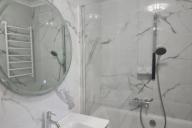To protect your house from lightning and fire, you should use a modern lightning rod.
Most houses have them, and people don't usually notice them until they actually prevent the damage.
Here are some facts you should know about them.
How They Work
Imagine lightning as a superhero villain trying to attack a building.
The lightning rod is like a shield. It attracts the lightning and gives it a safe path to follow, guiding it away from the building.

Materials and Design
Modern lightning rods are often made of metal, like copper or aluminum.
They're tall and pointy, which helps them catch the attention of lightning and guide it down safely.
Connecting to the Ground
The lightning rod doesn't fight the lightning alone. It has a sidekick called a grounding system.
This system is like a secret tunnel that takes the lightning safely into the ground, away from the building.
Protecting Electronics
Lightning is like a powerful electric shock. If it hits a building without a lightning rod, it can harm electronic devices inside.
The lightning rod helps prevent this by giving the lightning a safer path.
Maintenance
Lightning rods are sturdy, but they still need a bit of attention. It's like checking on your superhero gear to make sure it's ready.
Regular inspections ensure the lightning rod is in good shape and can do its job when needed.
Installation
Think of installing a lightning rod like putting on a superhero cape. It's a job for professionals who know how to do it right.
They decide where to place the lightning rod and make sure it's connected to the ground properly.
Safety First
While lightning rods are superheroes for buildings, it's essential to remember that during a lightning storm, it's safest to stay indoors.
The lightning rod does its job, but it's best to avoid being a superhero yourself and stay away from open areas.








